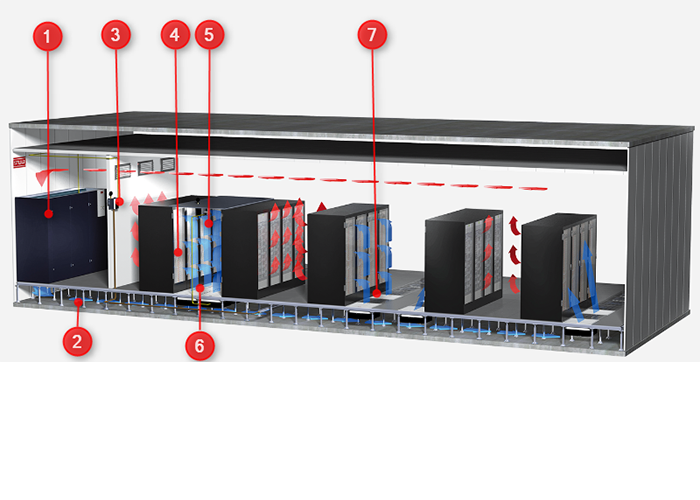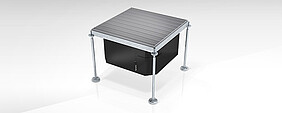Closed-circuit cooling via the raised floors allows the data center air conditioning to constantly satisfy the ever present demands for low running costs, high flexibility and redundancy with a well proven system.
However, in most cases the air is not regulated as it exits the raised floor. Here, sensor-controlled raised floor grilles with a variable opening angle are an essential element for restricting the energy consumption of the air conditioning system.
In the majority of cases, the raised floor manufacturer also provides the grilles for the outflow of air. As a rule, the customer can then choose between different degrees of perforation. Some manufacturers also offer restrictor panels, which are fitted to the underside of the floor grille and enable the airflow to be regulated manually.
The actual airflow rate required depends on the current load of the server. However, in this age of server virtualization and cloud technology, load fluctuations can occur as entire racks are switched on and off. Due to this fluctuating server load, flexible solutions are also in demand for closed-circuit air conditioning. The challenge lies in supplying the servers with sufficient cooled air that is targeted in line with demand.
Here, 'sufficient' means that precisely the amount of air needed at that moment by the servers exits the raised floor and 'targeted' means that as far as possible, the air exits the raised floor directly in front of the server rack's air intake. This last point is especially important when the cold and hot aisles are not separated by walls or partitions. The demand-based supply of cold air immediately in front of the server intake keeps the mixing of cold and hot air to a minimum. We can therefore refer to this concept as virtual containment.
With the AirModulator, STULZ offers a solution for a large variety of applications, and with dimensions of 600 mm x 600 mm that make it compatible with commercially available raised floors. The opening angle of the dampers can be regulated to suit demand by the building services management (BMS) system, or by the AirModulator's own controller, based on the temperature or pressure difference. In the event of a power failure, the dampers are opened automatically by a return spring. The unit as a whole is finished with a flow optimized grille, and is therefore also protected from mechanical stress, e.g. from lift trucks.



